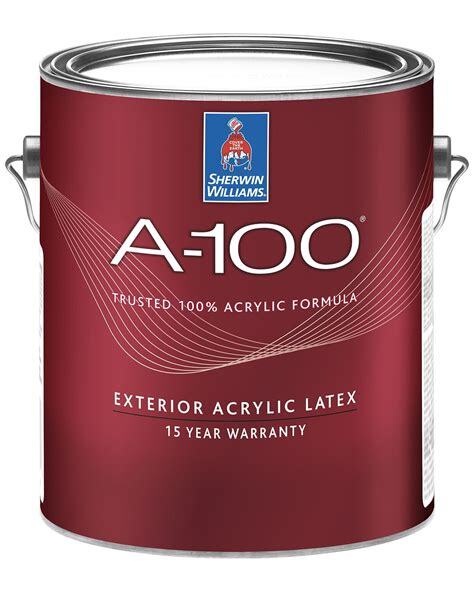Does Cheap Paint Always Look Cheap?

Key Features
- Proper Application Enhances Results: Quality tools, priming, and multiple coats help improve cheap paint's appearance.
- Ideal for Temporary Projects or Low-Traffic Areas: Cheap paint works well in guest rooms, closets, or rental units that don't need high durability.
- Long-Term Value of Premium Paint: Investing in premium paint can save money over time by reducing the need for frequent touch-ups or repaints.
Are There Cheap Paints That Don't Look Cheap?
It’s a question I get a lot: Does cheap paint always look cheap? The short answer? Not always—but the real answer is more complicated. There are some cases where budget-friendly paint can get the job done, but it often depends on factors like application, coverage, and durability. So, let’s dive into when it’s okay to go for the bargain option—and when you’re better off investing in premium paint.
What’s the Difference Between Cheap Paint and Expensive Paint?
The biggest difference between cheap paint and expensive paint lies in the formulation. Higher-quality paints contain more pigment, resin, and fewer fillers, which leads to better coverage and longer-lasting finishes.
- Pigment: This is what gives paint its color. Higher-quality paints use finer, more concentrated pigments, resulting in better coverage and richer hues.
- Resin: Resin helps the paint adhere to surfaces and resist wear. Premium paints contain more durable resins, making them less prone to peeling or cracking over time.
- Fillers: Cheap paint tends to contain more fillers, such as clay, which dilute the formula. As a result, it may take more coats to get the color you want, adding time and cost to your project.
So, while cheap paint might not always look cheap initially, it can show its true colors (literally and figuratively) over time.
Things to Know
- Cheap paint may require more coats for full coverage, increasing labor costs.
- Priming is essential to help cheap paint adhere and look more polished.
- High-quality brushes and rollers can significantly improve the final finish.
- Use premium paint in high-traffic areas or on exterior surfaces to avoid frequent repainting.
- Budget paint works best for short-term projects or low-traffic areas like guest rooms.
When Can You Get Away with Cheap Paint?
There are situations where cheap paint makes sense, especially when the stakes are low. Here are a few examples where budget paint might do the trick:
- Temporary Projects: If you’re painting a wall that’s going to be replaced or remodeled in a few months, cheap paint can save you some cash.
- Low-Traffic Areas: Rooms like guest bedrooms or closets, which don’t see much wear and tear, are good candidates for cheaper paint.
- Rental Properties: If you’re a landlord needing to refresh a rental unit quickly, budget-friendly paint can provide a short-term solution.
In these scenarios, using cheap paint won’t hurt your project—and you can still achieve decent results with proper prep work.
How to Make Cheap Paint Look Better
If you do decide to go with a cheaper paint option, application matters more than ever. Here are some tips to help you get the best results:
- Prime First: Always use a high-quality primer to improve the adhesion and coverage of cheap paint.
- Use Multiple Coats: Expect to apply at least two or three coats to achieve an even finish. Budget paints tend to be thinner and may not cover well on the first try.
- Invest in Quality Tools: Using a high-quality brush or roller can make a world of difference. Cheap tools can leave streaks or shed bristles, making even good paint look bad.
- Consider a Satin or Semi-Gloss Finish: A satin or semi-gloss finish can make budget paint appear more high-end. These finishes reflect light, which can hide some of the flaws often associated with lower-quality paint.
When to Skip the Cheap Paint
There are times when investing in high-quality paint is worth every penny. If you’re working on any of the following projects, go for the good stuff:
- High-Traffic Areas: Spaces like kitchens, hallways, and bathrooms need a durable paint that can withstand scrubbing and moisture.
- Exterior Surfaces: Cheap exterior paint won’t hold up to weather and UV exposure. Premium paints with UV protection and mildew resistance will last longer and save you money in the long run.
- Accent Walls: If you want a statement wall to pop, high-quality paint is your best bet for deep, consistent color.
- Homes You’re Selling: A fresh coat of premium paint can boost curb appeal and leave a lasting impression on potential buyers.
In Our Experience
"In our experience, cheap paint can look just as good as premium options with the right preparation. However, we've found that using premium paint in high-traffic or exterior areas saves time and money in the long run by reducing the need for touch-ups. Budget paint has its place, but knowing when to splurge is key to a successful project."
Will Cheap Paint Cost You More in the Long Run?
This is where the saying “you get what you pay for” rings true. Cheap paint might seem like a cost-saver upfront, but when you factor in additional coats, extra labor, and shorter longevity, it often ends up costing more over time.
- Labor Costs: If you’re paying a contractor to paint for you, cheap paint can drive up labor costs. It takes longer to apply multiple coats, and you may need a repaint sooner than expected.
- Maintenance: Cheap paint tends to peel, fade, or stain more easily, leading to frequent touch-ups or repaints.
- Environmental Impact: Using low-quality paint that needs frequent reapplication isn’t great for the environment. Investing in durable, eco-friendly paint reduces waste over time.
Does Cheap Paint Always Look Cheap? Not Necessarily
Ultimately, cheap paint doesn’t always look cheap—if it’s used correctly. With the right preparation, tools, and strategy, budget paint can deliver decent results. However, it’s important to recognize when premium paint is the better investment. In high-traffic areas or exterior applications, cheap paint is likely to show wear quickly, costing you more in the long run.
If you’re trying to decide whether to go with a budget brand or splurge on a premium option, ask yourself: How long do I need this paint to last? How important is the finish? Will I have time to reapply if needed? Your answers will help guide you to the right choice for your project.
Whether you choose cheap paint or premium, proper application and preparation are non-negotiable. With these tips in hand, you’ll be able to make an informed decision—and ensure your next paint job looks professional, no matter which type of paint you use.
Do You Have Questions? Give Us A Call With Any & All! 503-389-5758
-
People Also Ask
Does cheap paint require more coats?
Yes, cheap paint often requires more coats due to its thinner consistency and lower pigment content, which can increase project time and costs.
Can you make cheap paint look good?
Absolutely! Using a high-quality primer, multiple coats, and good brushes or rollers can help make cheap paint look more polished and professional.
What’s the downside of using cheap paint?
Cheap paint may fade, peel, or stain more easily, leading to frequent maintenance, higher long-term costs, and reduced durability in high-traffic areas.
-
SUBSCRIBE TO OUR BLOG: Stay informed with the latest in Painting and DIY projects by subscribing to Lightmen Painting. Get insights, tips, and more delivered straight to your inbox. We would also love to know what you would like to read about, leave thoughts on where we should go next. Interests, Topics, Ideas, all are welcome.
Get $3000 in Personal assistant credits from Magic.com
^ Click Our Logo Above To Get Started ^
If your in the Portland, Or. area and need advice or a free no obligation estimate call us at 503-389-5758 or email scheduling@lightmenpainting.com
Shout Out:
Celebrating Nelson J. Greer Painting Contractors: Transforming Spaces with Expertise
From the team at Lightmen Painting, we extend our highest praise to Nelson J. Greer Painting Contractors for their dedication to delivering exceptional painting services. Whether it’s whitewashing exterior brick or giving your home a fresh new look, they provide expert techniques and attention to detail that ensure outstanding results. Their commitment to quality craftsmanship and customer satisfaction aligns perfectly with our mission to enhance and beautify environments.
Thanks for stopping by Lightmen Daily! Stay tuned for more practical tips and expert advice on making your painting projects flawless, from wall to floor!
Definitions
- Cheap Paint: Lower-cost paint with less pigment and resin, often requiring more coats.
- Premium Paint: High-quality paint with better coverage, durability, and longer lifespan.
- Primer: A preparatory coating that improves adhesion and coverage for the topcoat.
- Multiple Coats: Applying several layers of paint for consistent color and coverage.
- High-Traffic Areas: Spaces that experience frequent use, such as kitchens and hallways.
- Temporary Projects: Short-term paint jobs where durability is less important.
- Satin Finish: A smooth finish with a slight sheen, ideal for hiding imperfections.
- Exterior Paint: Paint designed to withstand weather conditions and UV exposure.
- Maintenance Costs: The expenses associated with touch-ups or repainting over time.
- Accent Wall: A wall painted in a contrasting color to add interest to a room.
Lightmen Painting Serving: Portland, Tigard, Lake Oswego, Tualatin, West Linn, Milwaukie, Sherwood, Happy Valley, Oregon City, Beaverton, Hillsboro, Gresham -Trade Partners-

